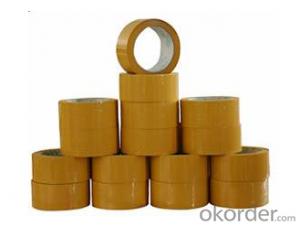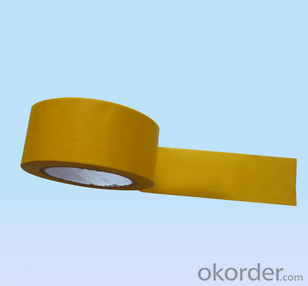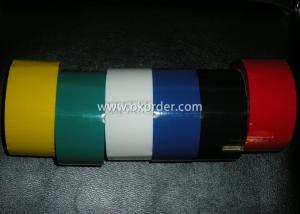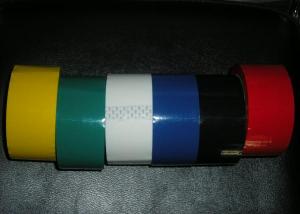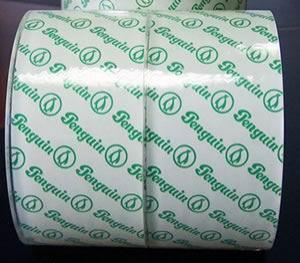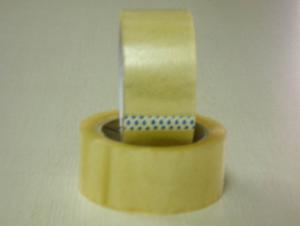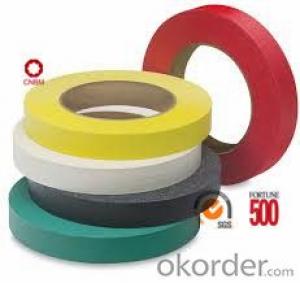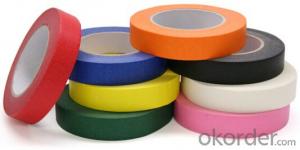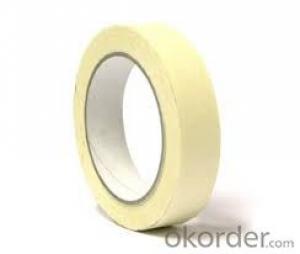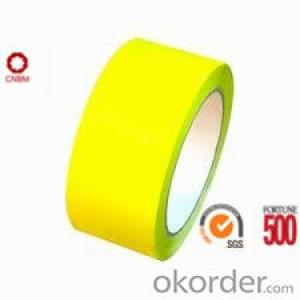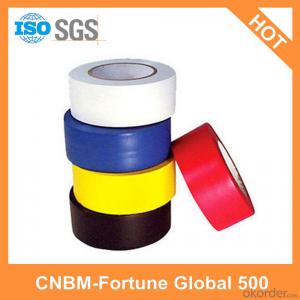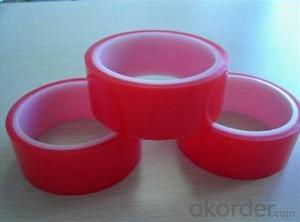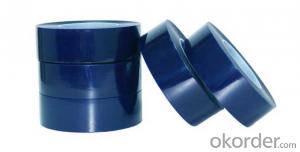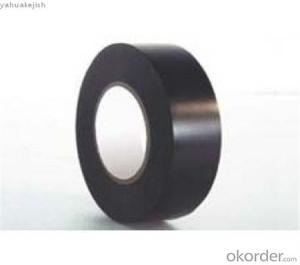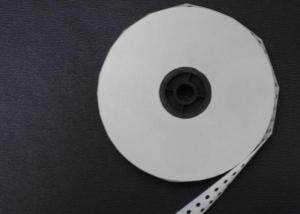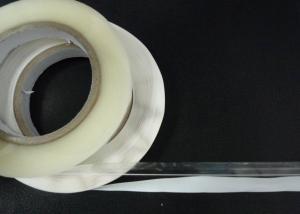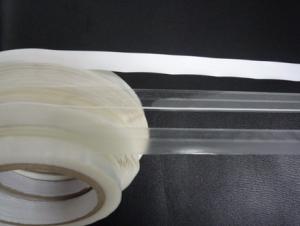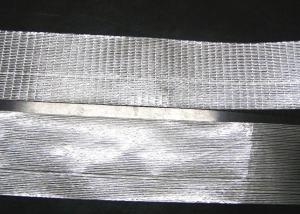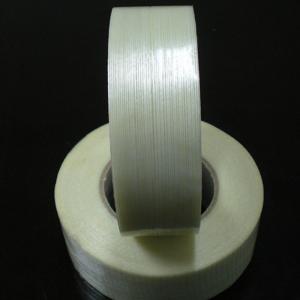Non-Adhesive Yellow OPP Tape OPP Film Water Based Acrylic
- Loading Port:
- Shanghai
- Payment Terms:
- TT OR LC
- Min Order Qty:
- 50 roll
- Supply Capability:
- 50000 roll/month
OKorder Service Pledge
OKorder Financial Service
You Might Also Like
Quick Details
Material: BOPP film
Adhesive Side: Single Sided
Adhesive: Water Based Acrylic
Use: Carton Sealing and Packing,Light Duty Packing,Bounding,Holding and other office and household use
Design Printing: Offer Printing
Place of Origin: China (Mainland)
Model Number: High Quality Colorful Printing Opp Adhesive Packing Tapes
Color: Clear, Tan, Yellowish, Brown, Yellow, White, Black, Blue, Green, Red etc.
Standard Size: 48mm x 66m, 50mm x 50m, 1.28m x 4000m, etc
Product Discription


Applications
Economical for general carton sealing
Auto-packing machine
Gift Wrapping & Decoration
Bundling &Strapping
Meet all kinds of transportation convenientl
Advantages:
OPP tape, superb tack and adhesion to surface
Strong grip that is ensured because of an excellent adhesive backing
Quality processing equipment that guarantees consistent quality
Peak performance even under extereme conditions of pressure and temperature
Sticks on all types of surfaces (paper, plastic, wood, glass, fiber and metal)
Consistent quality
On time delivery
Effective and timely communication
- Q: Is packaging tape safe for use on delicate surfaces or materials?
- Packaging tape is generally not recommended for use on delicate surfaces or materials. It is designed to provide a strong and secure bond on sturdy surfaces such as cardboard boxes. Using packaging tape on delicate materials may cause damage, leave residue, or negatively affect the appearance of the surface. It is advisable to use specialized tapes or alternative methods to protect delicate surfaces during packaging.
- Q: Does packaging tape come in different widths for sealing different-sized items?
- Packaging tape is available in various widths to seal items of different sizes, offering flexibility and customization in packaging and sealing. When packaging an item, the choice of tape width depends on its size and weight. For smaller or lighter items, narrower tapes like 1-inch or 2-inch can be used effectively. Conversely, wider tapes such as 3-inch or 4-inch are more suitable for larger or heavier packages, ensuring secure sealing. The availability of different tape widths guarantees optimal protection during storage and transportation of items with varying sizes.
- Q: Can packaging tape be used for sealing furniture or home goods?
- Packaging tape can indeed be utilized to seal furniture or home goods. Its design aims at delivering a secure and robust seal, rendering it apt for diverse applications like sealing boxes and packages. By employing packaging tape on furniture or home goods, one can effectively safeguard the item during transportation or storage. It is crucial to ensure the tape's proper application, avoiding any surface damage or residue. Furthermore, depending on the item's weight and size, it may be advisable to employ specialized tapes or techniques specifically tailored for sealing furniture or home goods, ensuring optimal protection.
- Q: Is packaging tape safe to use on mirrors?
- Yes, packaging tape is safe to use on mirrors as it adheres well without causing any damage or leaving residue behind when removed.
- Q: Can packaging tape be used for sealing plastic flower pots?
- Indeed, packaging tape is capable of effectively sealing plastic flower pots. This versatile adhesive tape is widely utilized for the purpose of sealing boxes and packages. Its robust adhesive properties render it suitable for securely fastening plastic flower pots, thereby preventing any potential leaks or spills. However, it is crucial to ensure that the surface of the plastic flower pot is devoid of dirt or moisture before applying the tape, as the presence of either could compromise its adhesion. Moreover, it is worth mentioning that there exist specialized tapes explicitly designed for sealing or repairing plastic materials, which may offer superior performance and durability when employed on plastic flower pots.
- Q: Can packaging tape be used for sealing paper bags?
- Indeed, paper bags can be securely sealed with packaging tape. Possessing robust adhesive properties, packaging tape effectively adheres to diverse surfaces, including paper. When appropriately applied, it furnishes a dependable and safeguarding seal for paper bags, effectively shielding their contents from spillage or external influences. To optimize adhesion, it is crucial to ascertain that the surface of the paper bag is both clean and dry prior to tape application.
- Q: Can packaging tape be used for sealing gardening or outdoor equipment?
- Yes, packaging tape can be used for sealing gardening or outdoor equipment. It provides a strong adhesive bond and can effectively seal boxes or other packaging materials used for storing or transporting gardening or outdoor equipment. However, it is important to consider the durability and weather resistance of the tape to ensure it withstands outdoor conditions.
- Q: Does packaging tape come in different eco-friendly options?
- Yes, packaging tape does come in different eco-friendly options. With growing awareness about the environmental impact of traditional packaging materials, manufacturers have introduced eco-friendly alternatives. These options include packaging tapes made from recycled materials or biodegradable materials. Recycled packaging tapes are often made from post-consumer waste, reducing the use of new resources. Biodegradable packaging tapes are designed to break down naturally over time, minimizing their impact on the environment. Additionally, some packaging tapes are made with water-based adhesives instead of solvent-based ones, further reducing their ecological footprint. These eco-friendly options allow businesses and individuals to choose packaging tapes that align with their sustainability goals while still ensuring secure packaging and shipping.
- Q: Can packaging tape be used for sealing plastic toolboxes?
- Indeed, plastic toolboxes can be effectively sealed using packaging tape. Specifically crafted to securely seal boxes and packages, packaging tape exhibits versatility by being suitable for various materials, including plastic. It delivers a robust and long-lasting seal capable of enduring regular handling and transportation. Nevertheless, for extended storage or heavy-duty purposes, it is advisable to opt for a more robust and specialized tape, like duct tape or strapping tape, as they provide enhanced durability and adhesion.
- Q: What are the alternatives to packaging tape for sealing packages?
- There are several alternatives to packaging tape for sealing packages. Here are a few options: 1. Gummed tape: Gummed tape, also known as water-activated tape, is a popular alternative. It is made of paper or reinforced material and requires water to activate the adhesive. Gummed tape forms a strong bond with the package and provides a tamper-evident seal. 2. Strapping: Strapping is commonly used for securing heavy or bulky packages. It involves using plastic or metal straps to hold the package tightly together. Strapping can be more secure than tape, especially for larger or irregularly shaped items. 3. Shrink wrap: Shrink wrap is a plastic film that can be wrapped around the package and sealed using heat. As the film shrinks, it tightly conforms to the shape of the package, providing a secure seal. Shrink wrap is commonly used for wrapping pallets or bundling multiple items together. 4. Adhesive labels: Adhesive labels can be used as an alternative to tape for sealing packages. These labels have a strong adhesive backing that sticks to the package, providing a secure seal. They are especially useful for small or lightweight items. 5. Twine or string: For lighter packages, twine or string can be used to secure the contents. Simply wrap the string around the package multiple times and tie it securely. While this method may not be as strong as tape, it can be a cost-effective and eco-friendly option. Ultimately, the choice of alternative to packaging tape depends on the size, weight, and nature of the package. Each option has its own advantages and disadvantages, so it's important to consider the specific requirements of the shipment before making a decision.
Send your message to us
Non-Adhesive Yellow OPP Tape OPP Film Water Based Acrylic
- Loading Port:
- Shanghai
- Payment Terms:
- TT OR LC
- Min Order Qty:
- 50 roll
- Supply Capability:
- 50000 roll/month
OKorder Service Pledge
OKorder Financial Service
Similar products
Hot products
Hot Searches
Related keywords
